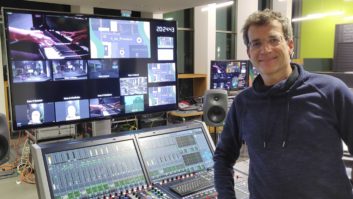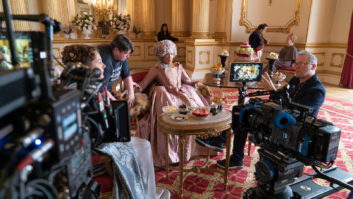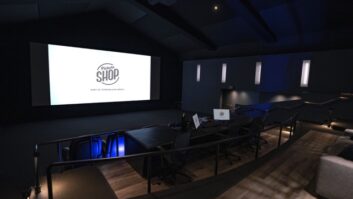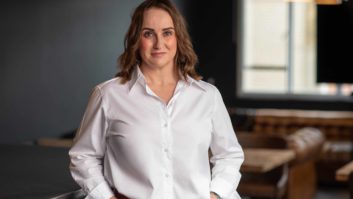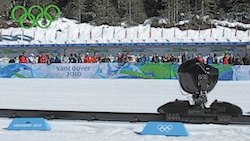
The 2010 Winter Olympics will be remembered for a luge tragedy before the games even began, a Russian team that was a shadow of former glory, and a mistake by a speed-skating coach that cost Netherlands another gold medal. Ken Kerschbaumer reviews the European broadcasting effort.
Making the momentous events real for Europeans across the continent fell largely on the shoulders of Olympic Broadcast Services (OBS), who utilised hundreds of Europeans for its productions; the European Broadcast Union (EBU) which delivered the signals back to the continent; and, of course, dozens of European TV networks that were on hand to give the coverage a personal touch.
An example of the European presence behind the productions was Whistler Olympic Park, home of the ski jumping, biathalon, and cross country skiing events. The biathlon competitions were produced by a crew from Norwegian broadcaster NRK. In addition to being the world’s experts in biathlon production, NRK has developed a proprietary system called TargetCam, which ensures easy access to each of the targets as the athletes take their shots.
“The TargetCam is a rail camera designed specifically to cover the targets,” explained Bjorn Bjorklund, venue tech manager for Olympic Broadcast Services (OBS). “It’s pre-programmed for a tight shot on each one of the targets, so the operator can push a button for any one of the targets and the camera will go directly there. It’s a production decision as to which target we go to and when, but the operator can move pretty quickly between the targets.”
While the Norwegians are the experts in biathlon, the Finns are the best in the world at cross-country production, so a crew from Finland’s YLE handled the production of the cross-country events. “Cross country has a totally different setup,” Bjorklund said. “We have 57 cameras on the cross country course, and that includes photo finish cameras, a blimp, and a helicopter. Except for the snowmobiles, they’re all manned.”
The cameras on both courses were wired by triax, which took nearly three weeks to lay down. An additional 12,000 metres of triax had to be run at the last minute, when some equipment “didn’t want to work,” as Bjorklund put it, a few days before the Games were set to begin.
An important part of OBS coverage was specialty cameras, from super slo-motion systems to POV cameras. John Pearce, Olympic Broadcast Services (OBS) manager of specialty equipment and his team oversaw 20 high-speed camera systems from three manufacturers: Arri, DVS and LMC.
“With 20 systems spread throughout the venues, there is no way one company that could provide all of those systems,” says Pearce. The Arri system, which uses the HiMotion camera system, was used at speed skating, hockey, curling, alpine, and cross-country events. The DVS system, which uses the SuperLoupe high-speed camera system, was used for figure skating, short track speed skating, speed skating, hockey, and the moguls skiing course. And the LMC system, which relies on the Antelope camera system, was found at snowboard cross, ski jumping, and biathlon. All of the systems recorded onto the camera head and then transfer clips over to the EVS server’s system at the core of the OBS facilities.
Shots from above were also important at the Winter Games, as seven aerial cabled camera systems, two helicopters, and even two tethered blimps got into the action to give fans fascinating new perspectives on everything from snowboard and skiing cross to cross country skiing and biathlon, downhill skiing, and more.
Cypress Mountain, for example, featured a cable camera system from Camcat for the moguls and a cable camera system from ACS France for the snowboard cross competition. “We spent a year putting the Camcat system for the moguls together for a two-day competition, but I was blown away by the coverage,” said Pearce. Cineflex gyrostabilised heads played a key role in getting steady, clear shots. “Their heads can get a very stable shot using a 42-times [magnification] lens despite a huge amount of vibration,” he added.
Getting signals home
While Olympic Broadcast Services handled the production of the events at the venues, the EBU’s role in the IBC was almost as important. An EBU facility within the IBC (and also in Whistler, two hours north of Vancouver and home to the alpine, nordic, and sliding events) pulled in live feeds from OBS over 2Gbps connections and repackaged them into six multilateral HD and SD feeds that were then delivered live to 37 broadcasters within the IBC and roughly another dosen directly to Europe.
“There are a lot of our members without any people on site who are working with our multilateral feeds that are sent to Europe,” said Francis Cloiseau, head of Eurovision Sports Operations. “They just don’t have the money to send anyone here.”
A Pesa 200×200 routing switcher sat at the heart of the EBU facility, pulling in signals and distributing them to the broadcasters on site and to the distribution area. Signal distribution gear from Vistek (Snell) and Avalon handled a variety of technical issues while encoders and decoders from Nevion do the heavy lifting of getting the content ready for distribution via MPEG-2. Nevion gear also multiplexed the SD signals, as many countries still require SD. “That reduces the cost of the circuits we need,” said Javier Polo, head of EBU Sports Operations.
The EBU served more than 35 member countries on site and a little more than a dozen in Europe that simply received the content on the home front. The majority of EBU members, however, at least sent commentators. AEQ commentary systems were used to capture the commentary. “All of the cabling of the EBU member facilities here in the IBC was also done by our staff,” said Cloiseau. “”Two big optic fibre pipes then send up to 30 different feeds back to Europe.”
The broadcaster perspective
Cooperation was also the name of the game within nations as broadcasters from countries like Canada and Germany collaborated with other networks within their borders. German broadcasters ZDF and ARD worked together to deliver their first HD Olympics, giving German sports fans a clear look at a team that was second only to the US in medal count.
A staff of more than 600 was on hand covering the action for both TV and radio and the networks with unilateral coverage at five venues. At three of those venues, the Sliding Center, Whistler Creekside and the Richmond Oval (speed skating), the Germans operated out of flypack units while NEP provided two OB vans at the biathlon (SS19) and ski jumping (NCP12).
“The quality of the world feed has been improving so we’re mainly supplementing a few things,” said Volker Frank, ARD technical leader. Thomson LDK8000 cameras recording to P2 decks were on hand to capture the different start and finish zones, interview players in the mixed zones, and cover coaches. The biathlon also featured Hot Head camera systems with 86x lenses that allowed for tight coverage on the eye of the biathlete as they focused on a shot.
“We can transfer material with the Avid Airspeed, ingesting content into the Avid world,” said Frank. The compression codec was DNXHD at 145 Mbps.
Five Vizrt graphic systems were also being used for the broadcasts and the networks used the Dartfish virtual enhancements provided by OBS, allowing them to lay one athlete over another virtually for easy comparison of performance. “I especially like the Dartfish at sliding and skiing,” said Frank.
The BBC took a different approach, sending a small workforce of 70 that worked closely with BBC staff in London. Charlie Cope, BBC Sport technical executive, said the eight-hour time difference between London and Vancouver was part of the reason for the smaller staff as the on-location crew was primarily in place to add commentary to EBU HD feeds being received in London.
Of course, 2012 is a big focus for the staff as well, as the BBC will broadcast a summer games that will take place in London. BBC executives were in Vancouver meeting with broadcasters, in particular CTV, to learn about workflows, staffing strategies and more. “It’s been great to visit the different venues and broadcasters here,” said Cope.
The expectation, he said, is that the evolution of digital platforms like the internet, mobile devices and IPTV will be a big driver of content creation and distribution in 2012. “Those platforms tend to drive everyone to reassess how they make content, not just a single platform that drives the production process,” said Cope.
As if the challenge of broadcasting an Olympics held on home soil is not enough, the BBC will also broadcast the Games following a move of its base of operations from London to Manchester. The good news, says Cope, is a new building will mean new technologies that will make it easier to deliver and create content.
“It’s going to be a busy few years,” he said.
